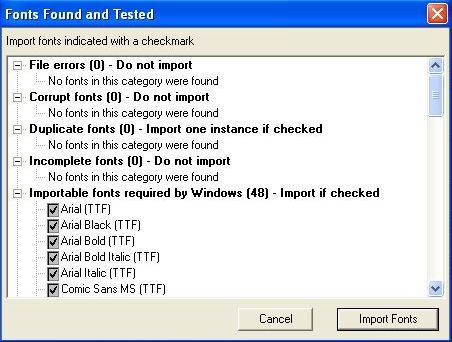

We didn't see the ability to search simply for serif, sans serif and so on – this is done elsewhere – but other than this, the range of options available was impressive.įinding the right font for a job is often a difficult task, which is why there's a keyword search option as well. The search is performed for you as you go, and saving this for later use stores it as a Smart Set in the Sets list.
Fontagent 4 install#
The Smart Set will show you all the fonts in your libraries that fit, and whenever you install more fonts that match they will automatically be included in the Smart Set.Ī Smart Set is made with the Find feature, setting up a search that looks for fonts using a broad range of criteria.

Like iTunes' Smart Playlists, FontAgent Pro's new Smart Sets can be set up with whatever typeface search filtering criteria you want serif, transitional, weight, foundry, version, slant and much more.
Fontagent 4 pro#
You can activate fonts individually, by Sets, or whole libraries at a time – although the latter will simply give you the mile-long font menus that you installed FontAgent Pro to avoid in the first place. Then, for the ongoing grouping and listing tasks, you use Sets. Multiple libraries enable you to organise your collections of fonts in whatever ways you prefer. It still uses unusually colourful icons, but everything there makes a lot of sense at a glance – and that's a very important point when you want to just get on with sorting out and using your typefaces. They just seemed to care more about their product and providing a good experience.The interface is smartened up from previous versions and the enhancements, while not radical, make using it a more streamlined experience. I always preferred their solution to the Extensis offerings myself. Good news is, I think there is a separate pkg in the download for just the plug-ins that I was able to push via ARD at the time that would fix that.

I had made the mistake once or thrice of doing the installs in the reverse order. (Hmm, was it a burger?)Īs for the CS plug-ins, I can say that FontAgent Pro has always been pretty good at recognizing the installed applications and injecting the plug-ins into the proper locations, as long as Adobe CS and/or QXP are installed before the FAP Client of course. I'm lucky I remember what I ate for lunch yesterday. Unfortunately, actual memories of what I did are very fuzzy. Not sure about the server credentials and AD link.
Fontagent 4 license#
I seem to recall that I was able to bake a registered version into my crude imaging setup at the time, so I would say its probably possible to deploy a license file as part of your package. This was version 3 I believe and I touched a little on version 4. I worked with FontAgent Pro Client and Server some years ago, but it was before my Casper Suite using days, so no real automated deployment.

Is this something the users will need to handle (oy, I hope not as not all users are admins).
Fontagent 4 serial number#
How is the serial number handled for client/server environments.or is it one of those "don't worry about it, the server is the only thing that needs to be licensed" jobbies?Īlso, is the Client for FAP Server.pkg intelligent enough to look for existing Creative Suite and QuarkXPress applications so it can install the required Plug-In or Xtension? The preupgrade/preinstall/postinstall/postupgrade scripts in Client for FAP Server.pkg only seem to shut down the running process and remove old versions. I'm fairly certain they'll ask us to package/deploy preconfigured to point to the FAP Server so I'm hoping someone here can enlighten us on what files (or commands?) need to be put into our wrapper so when we deploy it the users will not be prompted for the FAP Server address (FQDN). Pushed to logged off computer without a problem. A quick peek at the Client for FAP Server.pkg raises no flags, it's actually a pretty clean package. A few of the groups we support use FontAgent Pro 5 (server/client), so we're looking at packaging it for distribution.


 0 kommentar(er)
0 kommentar(er)
